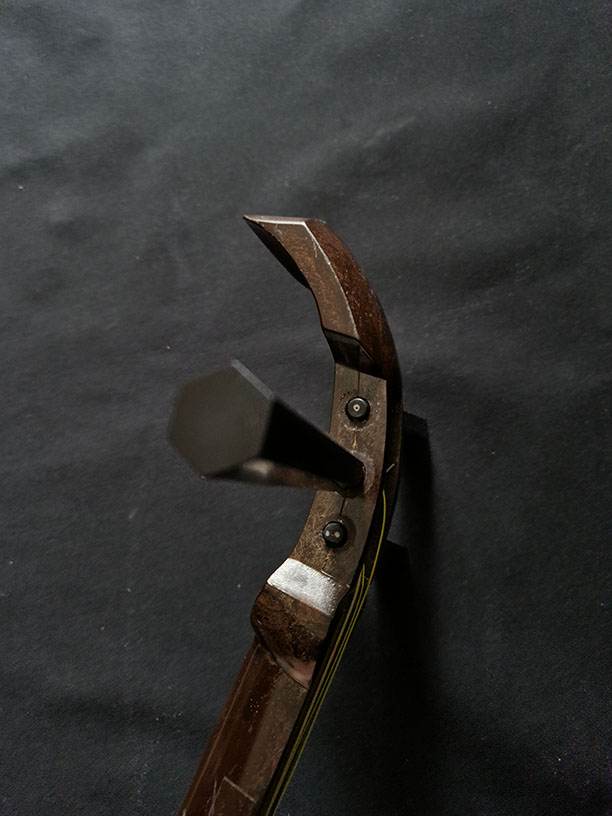Sometimes in life you come across things you would never have imagined. This week I’m going to tell you about one of those What the f*** moments that completely blew me away.

A few weeks ago I received several shamisen from Japan. Normally, when opportunities arise to get a three-string, I usually take advantage of them, as it is difficult to find instruments in good condition.
Today I will tell you about one of them. From the pictures I saw, it looked like an ordinary nagauta shamisen, made of rosewood and well preserved. It was missing the itomakis and needed an urgent skin change, but that was not a problem to enjoy its sound again with a tune-up.
I opened the box where the shamisen was and the first thing I wanted to check was the state of the dou and the type of skin it came with from the factory. The dou is usually the part of the instrument that suffers the most over the years. With the passage of time, the four pieces become detached, usually, it is necessary to re-glue and adjust the parts. To my surprise, I found it in perfect condition, with all the sides in very good condition, although the factory skin (a kind of plastic paper) was also broken.
But something wasn’t normal. The feeling of that dou in my hands was very strange and unique…


I looked inside and saw that they had written a date on the inside: 52.9.27.
Perhaps, the logical thing would have been to think that it was the date of manufacture and that it corresponded to the year 1952, but of course, it was very well preserved for being so old and it had to be taken into account that it was a product from Japan, therefore, that date should correspond to the equivalent Japanese year. That is to say, 27 September of the year 52 of the Shôwa era, in other words, 1977.
So far, so normal. Yes, it is a shamisen that is almost 50 years old, but there was something else that I didn’t quite understand… Why such a peculiar shape of the neck joint with the drum? Why the inside walls of the dou were white?

Have you already tied the knot or haven’t you figured it out yet? As far as I know there is no such thing as white wood, so… what material are we talking about? What material are we talking about? ivory? impossible, the weight of the pieces did not correspond to white gold, there was only one option left….
Indeed, it was made of plastic! In other words, a 1/1 scale shamisen nagauta toy from 1977!

As soon as I had tied up the ends I went in search of the neck of the instrument, and then I confirmed everything. The joints of the split sao were cylindrical, something impossible to do with wood. The pieces lacked any kind of grain, and although the traces of dirt made me doubt, when I cleaned them, I realised that they had been made with plastic resin or similar. In fact, you can still see some sort of gradients reminiscent of high-end shamisen.


I was amazed by the faithfulness in the construction of the tenjin, the mould was simply perfect for a 1977. A true marvel of Japanese toymaking at the time. In the holes of the itomakis you could see the horizontal marks of the mould in which it had been injected. A pity not to have seen the itomakis that came as standard…


The curiosity was killing me inside. What would this shamisen sound like?
This past week I changed the skin on both sides, put a set of new itomakis on it, strung it with silk threads and here is the result:
What do you think? I’m actually surprised. The sound quality is quite good despite its plastic construction. If I squeeze it a bit and play it too hard you can feel the limitations of the material but it must have been an amazing gift for the kids (and not so kids) of the time.
Obviously, the leather I have used helps a lot to improve the sound and that will be the next new thing you will see around the web.
I hope you enjoyed this article, if so, remember to share via the links below or leave me a comment on my instagram post.
See you in a fortnight!